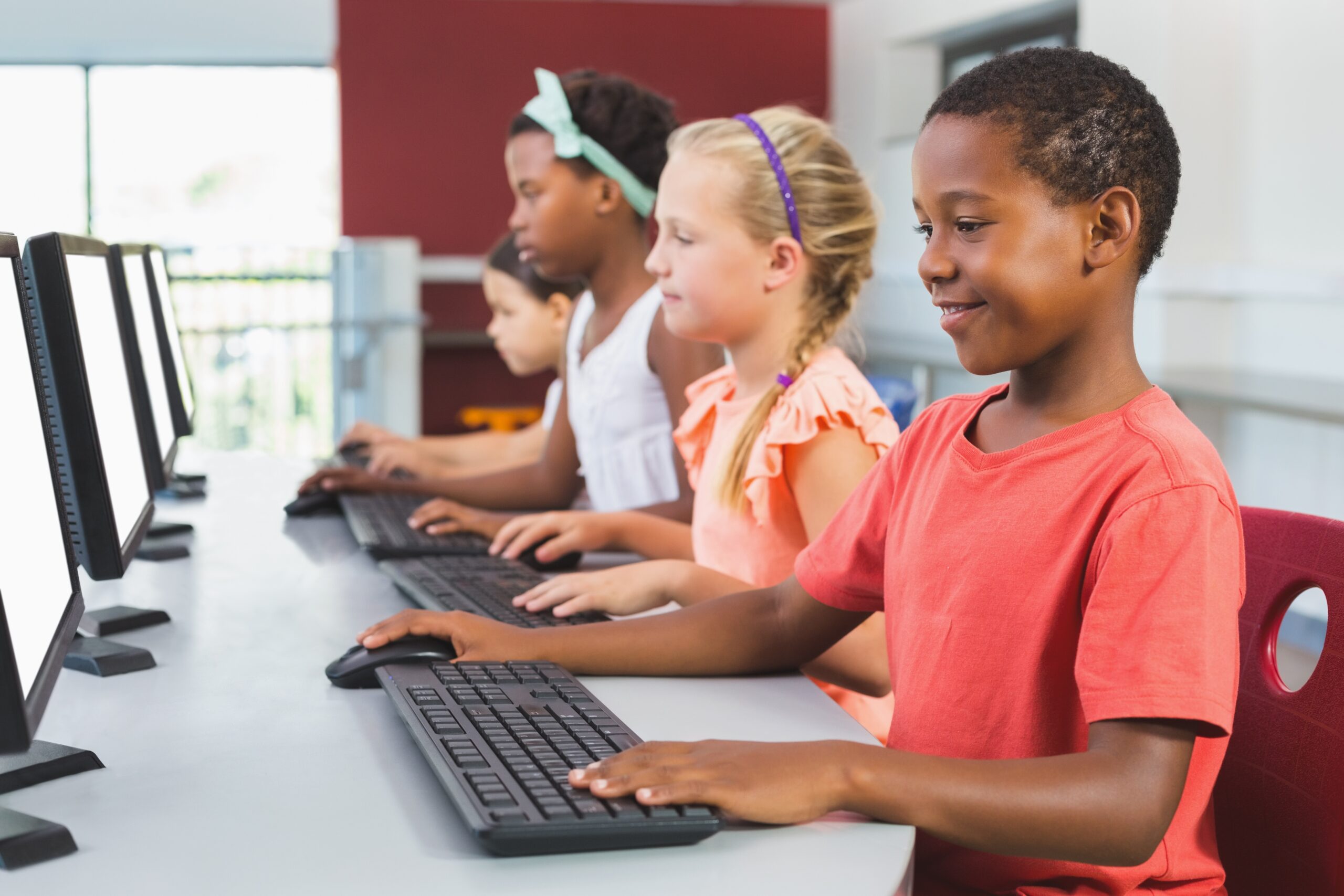Parents and educators alike are worried about the amount of time students spend glued to screens; our latest data shows that the average K-12 student spends 98 minutes a day on school-issued devices in class and 117 minutes total when factoring in after-school use. These numbers, while troubling as they are, only tell part of the story. The more granular truth is that time spent on screens varies widely by grade level, and peaks in middle school.
Let’s break down the numbers and highlight what these patterns mean for parents, teachers, and policymakers aiming to reduce screen-related risks in their schools.
How Screen Time Changes from First Grade to High School
- Early grades (1st-5th): Usage starts at around 45 minutes and increases to 104 minutes daily as students are introduced to technology in educational spaces.
- Middle school (6th-8th): The sharpest spike in usage occurs here, peaking at 2 hours and 24 minutes in 6th grade.
- High school (9th-12th): A decline in screen time becomes prevalent as students shift schoolwork to personal devices and balance academics with extracurriculars or work.
Where Is Most Screen Time Spent — In or Out of School?

- Overall: 84% of students’ time on district-issued devices happens during school hours.
- Young students (grades 1-4): Over 88% of screen time is recorded in school.
- High school (grades 9-12): As students gain more freedom, the percentage of in-school screen time drops to 78-79%.
Takeaway: This data shows that schools bear the responsibility for managing the majority of students’ screen time.
What Students Are Actually Doing Online
Top in-school apps include:
- Google Docs, Google Classroom, Clever, Microsoft Office 365, and i-Ready.
Out-of-school apps differ slightly:
- Productivity tools like Microsoft Office 365 and Google Docs.
- YouTube, Facebook, and Skype.
Takeaway: The overlap between in-school and out-of-school apps suggests the need for more tailored boundaries to differentiate between productive and non-educational usage.
Solutions to Manage Screen Time Without Disrupting Learning
- Monitor screen time: This is the first step to identifying issues and creating limits.
- (Achievable with Lightspeed Insight.)
- Set clear screen time limits: Integrate policies that limit non-essential device use during and after school.
- (Achievable with Lichtgeschwindigkeitsfilter After School Rules and Elternportal)
- Monitor app usage: Use tools to review which apps students engage with the most and flag potentially distracting or non-educational apps.
- (Achievable with Lightspeed MDM, Lightspeed Classroom, Und Lichtgeschwindigkeitsfilter)

- Age-appropriate policies: Younger students require more guardrails, while older students benefit from flexibility and guidance.
- (Achievable with Lichtgeschwindigkeitsfilter.)
- Digital detox sessions: Encourage unplugged activities during certain periods of the day to reduce digital fatigue.
- (Achievable with Lichtgeschwindigkeitsfilter and Lightspeed Classroom.)

Conclusion: Balance Is Key
While technology is integral to modern education, excessive screen time can be harmful. With the right strategies, schools can balance the benefits of digital learning with the need for offline, meaningful engagement. Lightspeed-Systeme is committed to helping districts understand and act on their unique screen time data to make positive changes.
Note: Screen time data shared in this blog is from Lightspeed Insight and is based on usage from January to June 2024 across 344 districts and 2.8M students, nationwide. Data is based on district device use only.

